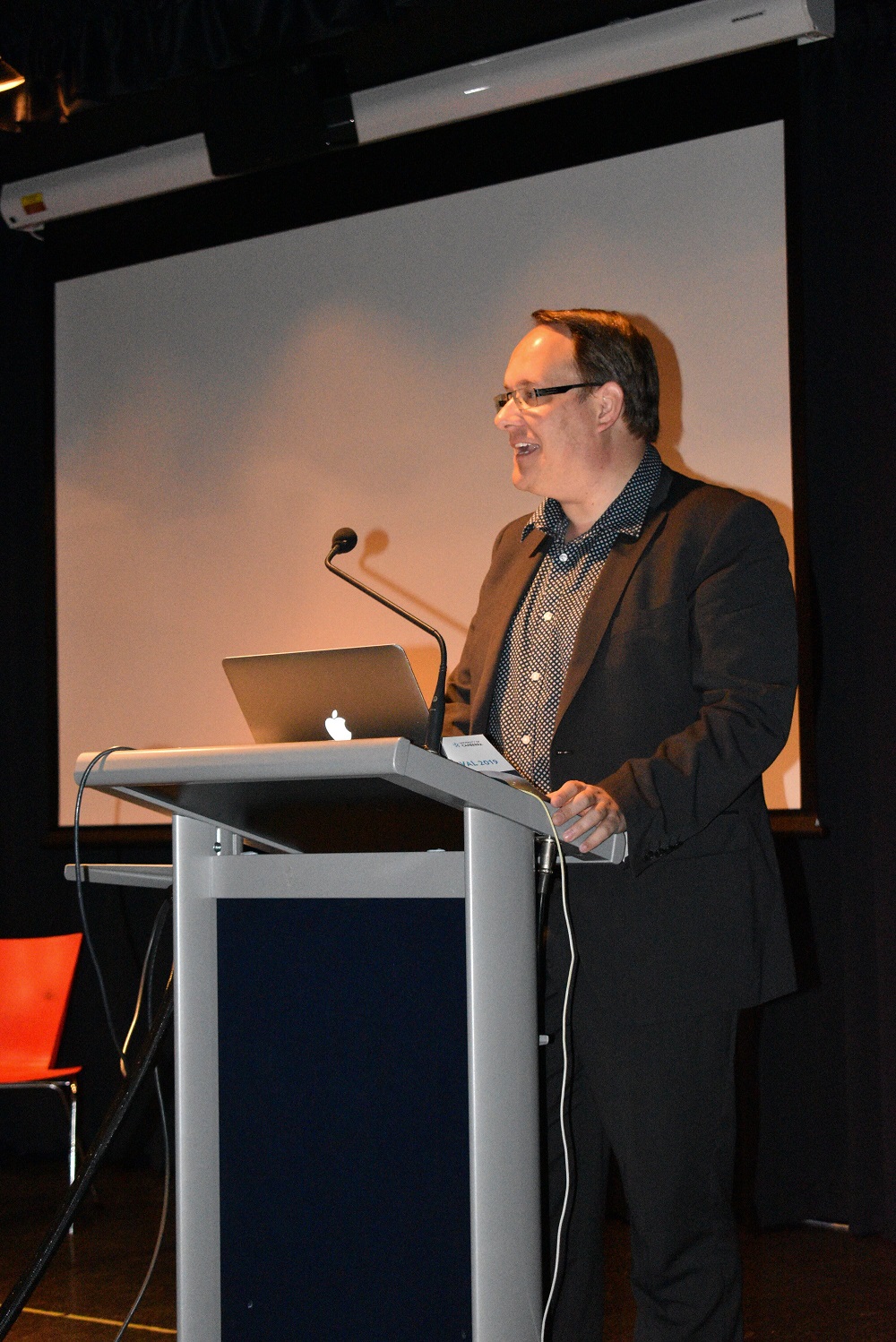Katarina Slavich
14 November 2019: The University of Canberra’s Faculty of Arts and Design has showcased the world-class research being undertaken as part of the inaugural FAD Research Festival. The International Building Quality Centre (IBQC) was also launched as part of the event.
The festival saw researchers, Higher Degree by Research students and Honours students come together and showcase the work they have been doing through a series of presentations, panel discussions, poster sessions and keynote speeches.
The faculty provides a vibrant research culture in the fields of Arts, Humanities, Design, Communication and Media, Architecture and Built Environment.
Visitors heard from Centenary Professor Ross Gibson, who discussed how he used non-traditional research methods to explore the richness of the forensic photography collection at the Justice and Police Museum in Sydney.
Visitors also walked through a series of posters highlighting the research projects, illustrating how a University of Canberra-led consortium has transformed Haig Park through the Haig Park Experiments, and an analysis of how media shaped the Child Abuse Royal Commission.

“There is state-of-the-art research being undertaken at the University of Canberra, which we are proud to showcase,” said Professor Jason Bainbridge, Executive Dean of the Faculty.
“The festival is an opportunity for not only the UC community to see the work the faculty is doing, but also the wider Canberra community and industry partners.”
The new International Building Quality Centre (IBQC) was launched as part of the festival, with the centre to serve as a collaborative medium through which systems, practices, regulations, codes and laws that provide best practice solutions and answers will be identified, endorsed and encouraged.
It comes after many jurisdictions across Australia and the world have faced challenges with building regulations that have not delivered to the level of safety and security expected by the public.
Because of this, stakeholders believe that a rethink of the philosophies and traditions that underpin the design of modern-day building control is timely and necessary.
“This centre has come out of the need to look at legislation, regulations and requirements of the building industry to make sure we have the right standards and quality of buildings going up, into the future,” said Professor Charles Lemckert, Head of School of Design and Built Environment at the University.
“It’s very timely given the Grenfell Tower incident, which is a cladding design issue. There have been issues with the Opal Tower in Sydney and the Melbourne Cricket Ground now has an issue with the quality of the building.”
Professor Lemckert says some of the issues come down to how the industry is regulated and how it is monitored and managed over time.
“We now have the opportunity to step back, have a look at the industry, and make it better.”
Experts from around the world will work together under the auspices of the centre, to look at best practices in different jurisdictions and how they can be implemented, to create an industry with better quality outcomes.


